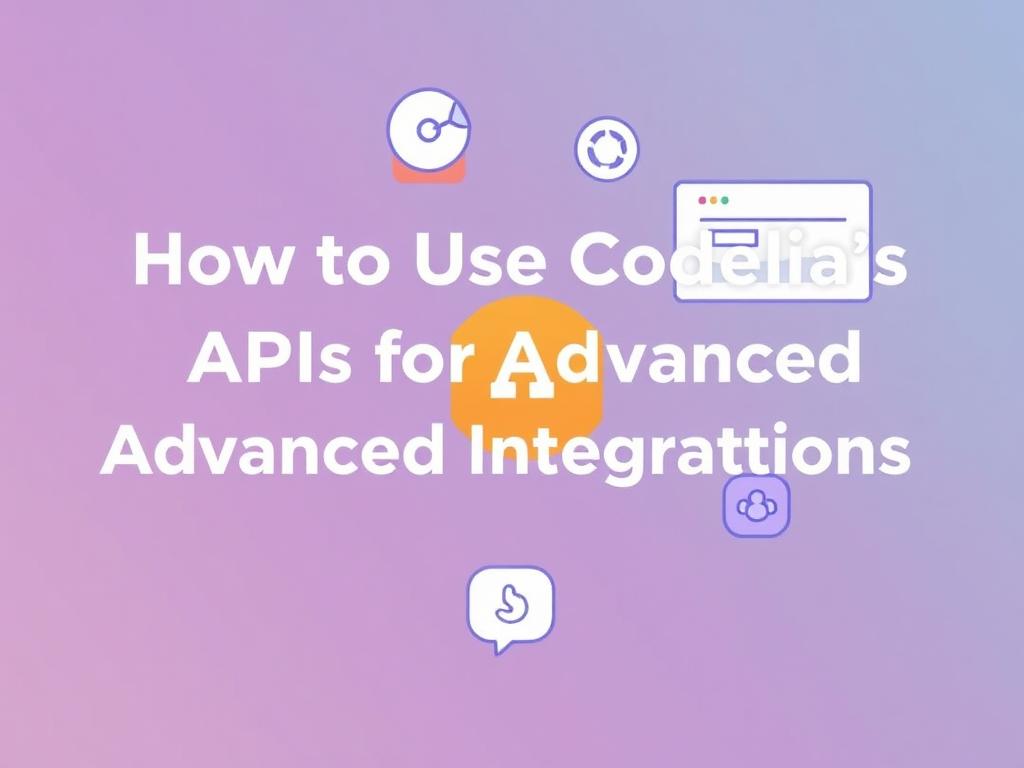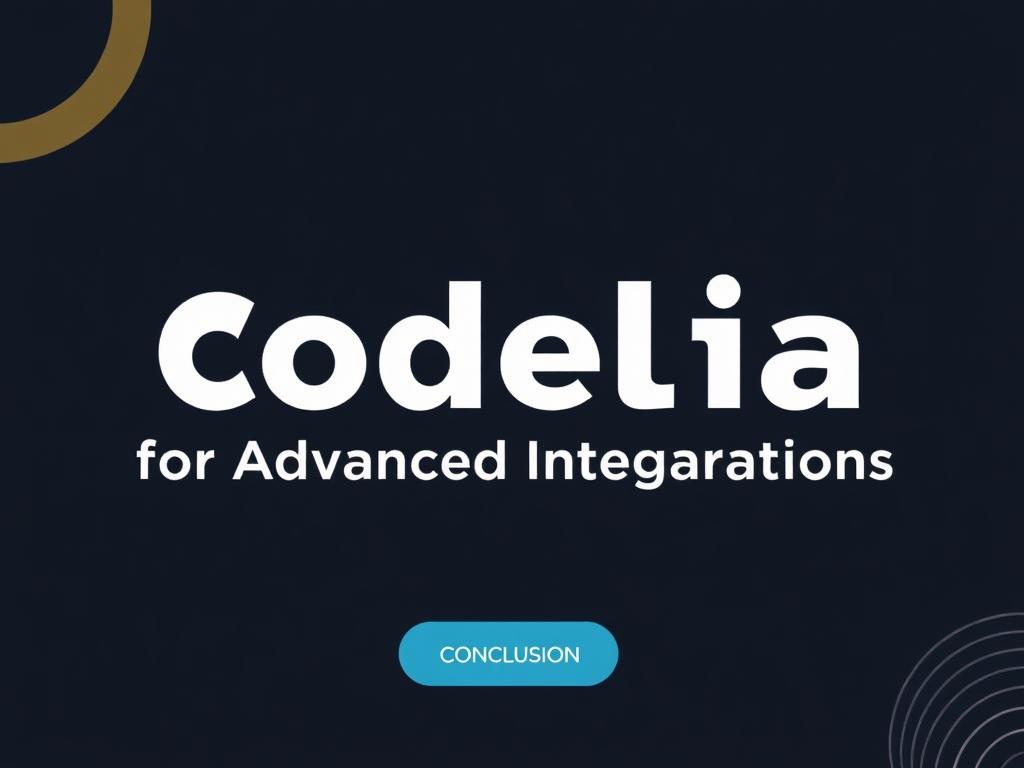How to Use Codelia CMS’s API for Advanced Integrations
Understanding Codelia CMS and Its API
Codelia CMS is a versatile content management system designed to empower developers and content creators alike. Its flexibility extends beyond the standard content editing interface through a powerful API that enables advanced integrations. Whether you’re looking to connect Codelia with third-party applications, automate content workflows, or build custom modules, the API is your gateway to unlocking Codelia’s full potential. In this article, we’ll explore how to use Codelia CMS’s API effectively, breaking down the key concepts, demonstrating practical examples, and providing tips for seamless integration.
What Makes Codelia CMS’s API Stand Out?
The Codelia CMS API offers multiple features that distinguish it from other CMS APIs. It supports RESTful principles, making it easy to use with various web frameworks or programming languages. The API is well-documented and provides endpoints for interacting with content, users, media, settings, and more. Additionally, it offers robust authentication methods, including OAuth2 and API tokens, ensuring that your integrations remain secure.
Here’s a quick overview of Codelia CMS’s API key features:
| Feature | Description | Benefit |
|---|---|---|
| RESTful Endpoints | Structured API URLs using standard HTTP methods | Easy to integrate with any programming language |
| Comprehensive Documentation | Detailed guides and example requests/responses | Smooth developer experience and faster onboarding |
| Secure Authentication | Supports OAuth2 and API tokens | Protects your data from unauthorized access |
| Content & Media Management | Endpoints for CRUD operations on content and media files | Fully automate content workflows |
Getting Started with Codelia’s API

Before diving into advanced integrations, you need to set up your development environment and gain access to the API. Start by creating an API token or setting up OAuth2 credentials within your Codelia CMS admin panel. This step is crucial, as every API request requires authentication to ensure security.
Next, get familiar with the API base URL. Typically, it looks like this:
https://yourcodeliawebsite.com/api/v1/
From here, you’ll build your endpoints by appending resource paths, such as `/content`, `/users`, or `/media`.
Essential Tools for Interacting with the API
You don’t need fancy tools to make API requests, but they certainly help. Common tools include:
- Postman: Great for testing endpoints without writing code.
- cURL: A command-line utility useful for quick checks.
- JavaScript Libraries: Axios or Fetch API for browser-based requests.
- Backend Frameworks: Node.js, Python requests library, PHP’s Guzzle, etc.
Having these tools ready will speed up your development process.
Working with Content Through the API
One of the primary reasons to use the Codelia CMS API for advanced integrations is to manipulate content programmatically. This means creating, reading, updating, and deleting (CRUD) content without manually logging into the CMS interface.
Example API Calls for Content Management
| Action | Endpoint | HTTP Method | Description |
|---|---|---|---|
| Fetch all content items | /content | GET | Retrieve a list of all content entries |
| Create new content | /content | POST | Add a new content entry |
| Update existing content | /content/{id} | PUT | Modify content by its ID |
| Delete content | /content/{id} | DELETE | Remove content from the system |
To create a new content item, your POST request will typically include a JSON body with fields such as title, body, author_id, categories, and custom metadata.
Sample JSON for Creating Content
{
"title": "Discovering Codelia API",
"body": "This post explains the power of Codelia CMS's API for advanced integrations...",
"author_id": 2,
"categories": ["API", "Integration"],
"metadata": {
"seo_title": "Codelia API Guide",
"tags": ["codelia", "cms", "api"]
}
}
Sending such data will let you automate blog posts, news updates, or any other content type supported by your Codelia installation.
Integrating Media and Assets
Codelia CMS API doesn’t just stop at textual content. You can also upload, update, and manage images, videos, and files through specific media endpoints. This capability is invaluable for integrations like syncing digital asset management systems or implementing custom media galleries.
Media API Endpoints Overview
- GET /media: List all available media files
- POST /media: Upload new media
- PUT /media/{id}: Update metadata or replace a media file
- DELETE /media/{id}: Remove media from the library
Uploading Media via API
Uploading media usually requires a multipart/form-data POST request. You’ll attach the file along with optional metadata such as alt text, descriptions, or tags. Here’s what a simplified version may look like:
file: Your media filealt_text: A short descriptiontags: Comma-separated keywords
Using Codelia CMS’s API to manage media means your integrations can automate everything from image galleries to video hosting, all within the CMS framework.
Authentication and Security Best Practices
Because integrations often involve sensitive data, securing your API usage is critical. Codelia CMS provides OAuth2 support, allowing you to implement secure protocols for token-based access. Alternatively, API tokens offer a simpler method for server-to-server communications.
Here are some security tips when using Codelia CMS’s API:
- Always use HTTPS to encrypt communications.
- Limit API token permissions to only the required scopes.
- Rotate API tokens periodically to reduce risk.
- Monitor API logs to detect unusual activity.
- Use OAuth2 for third-party application integrations.
Staying mindful of these best practices will save you from many potential headaches along the way.
Advanced Use Cases and Integration Ideas

Now that you know how to communicate with Codelia CMS’s API, let’s explore some real-world advanced use cases.
- Headless CMS: Use Codelia as a backend content source, delivering content to web or mobile apps via API calls.
- Content Synchronization: Sync content between Codelia and external platforms like e-commerce, marketing automation, or CRM systems.
- Automated Publishing: Schedule content creation or updates triggered by external events, such as product launches or social media campaigns.
- Custom Dashboard Development: Build tailored admin dashboards that pull data from Codelia’s API to display analytics or content performance.
- Multi-site Management: Integrate content workflows across different websites powered by Codelia CMS with centralized API calls.
Each of these scenarios leverages the API to extend functionality far beyond the default Codelia CMS capabilities.
Troubleshooting and Tips for Smooth API Usage
Working with any API can present challenges. Here are some tips and common pitfalls to avoid when using Codelia CMS’s API:
- Check API versioning: Always confirm you are using the correct API version to prevent compatibility issues.
- Validate data formats: Ensure JSON payloads conform to expected schemas to avoid errors.
- Handle rate limits: If applicable, implement retries with exponential backoff to manage throttling.
- Test error responses: Understand the error codes and messages the API returns to debug faster.
- Use pagination: When retrieving large datasets, always utilize pagination parameters to reduce load.
By approaching your integration with these tips in mind, you’ll save time and build more reliable connections.
Conclusion

Codelia CMS’s API is a powerful tool that can transform the way you manage content and integrate with external systems. Its RESTful design, robust authentication, and extensive coverage of content and media management enable developers to create sophisticated, custom workflows and applications. By understanding how to get started, securely authenticate, and interact with key endpoints, you open up a world of possibilities for your website or digital platform. Whether you want to build a headless CMS, automate content publishing, or develop advanced integrations, mastering Codelia CMS’s API is the key to unlocking next-level capabilities. With careful planning, thoughtful development, and adherence to security best practices, you can leverage this API to create seamless, efficient, and scalable content management solutions.

